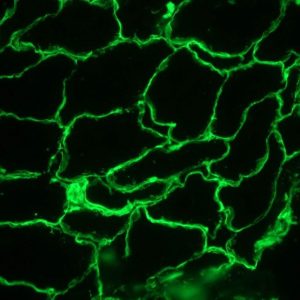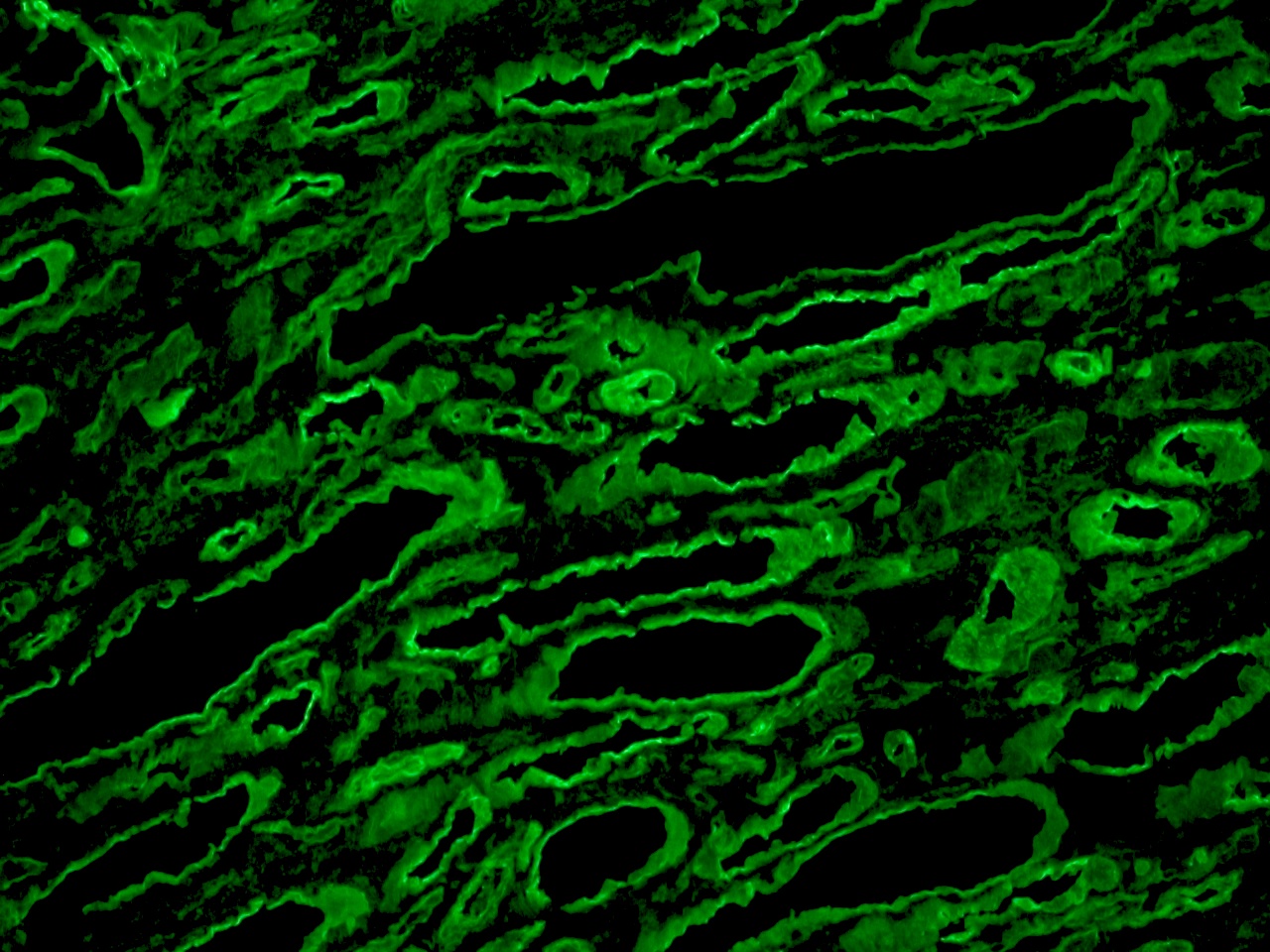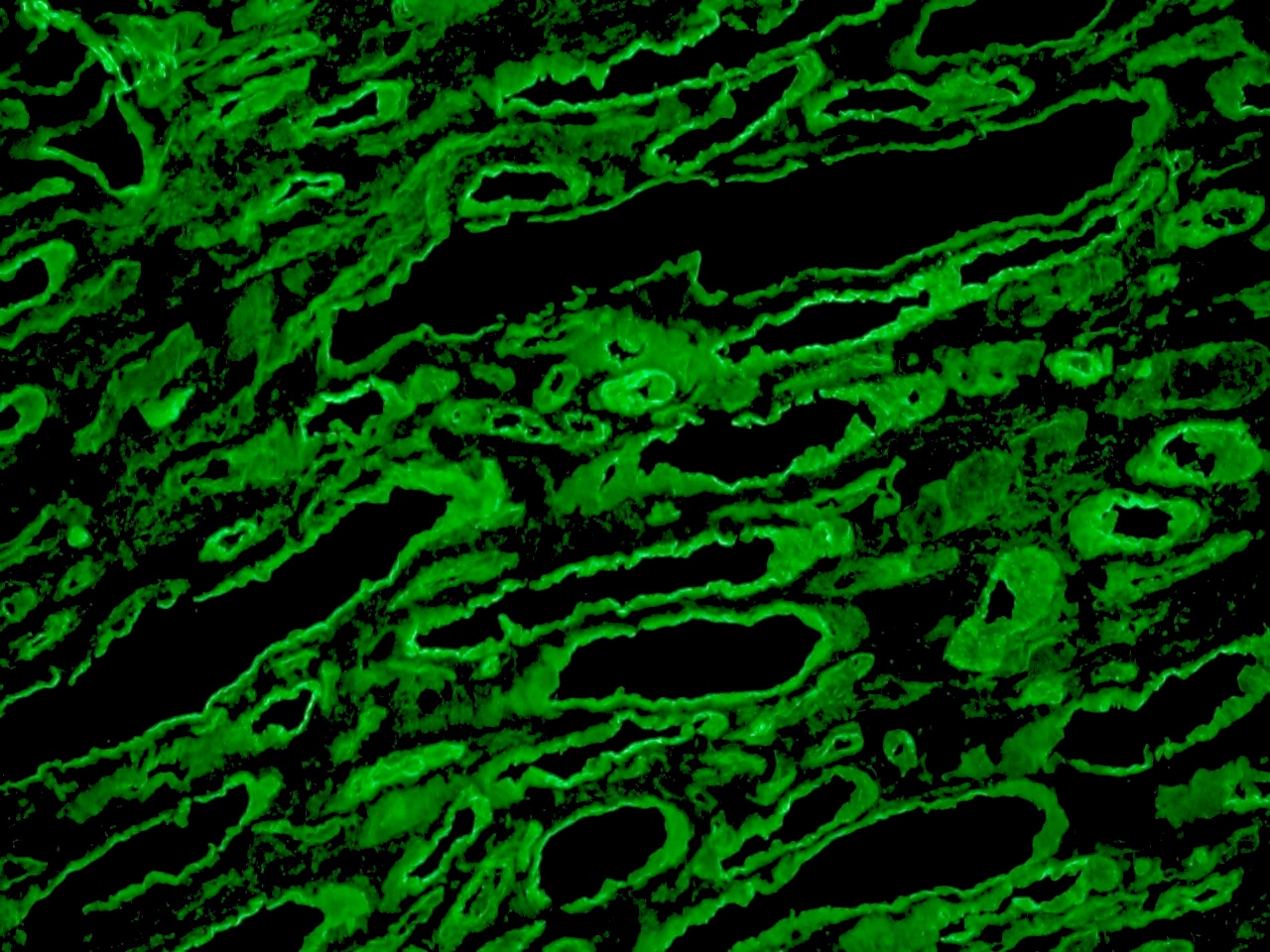Catalogue

Rat anti Laminin
Catalog number: MUB1100P$422.00
Add To Cart| Clone | A5 |
| Isotype | IgG2a |
| Product Type |
Primary Antibodies |
| Units | 0.1 mg |
| Host | Rat |
| Species Reactivity |
Human Mouse Swine |
| Application |
Immunocytochemistry Immunofluorescence Immunohistochemistry (frozen) |
Background
Basement membrane components play an important role in cell adhesion, locomotion, differentiation and embryonic compartmentalization. Laminin anchors cells to the basement membrane through interactions with integrins at the cell surface and collagens in the basement membrane.
Source
A5 is a rat monoclonal IgG2a antibody derived by fusion of mouse myeloma cells with spleen cells from a Fisher rat immunized with a laminin preparation from the EHS mouse tumor.
Product
Each vial contains 100 ul 1 mg/ml purified monoclonal antibody in PBS containing 0.09% sodium azide.
Specificity
A5 reacts with laminin. In the reference of Ljubimova et al [2] its reactivity is further specified to laminin gamma1.
Species Reactivity: Laminin gamma1 (see reference 2)
Applications
A5 is suitable for immunocytochemistry, immunofluorescence and immunohistochemistry on frozen tissues. Optimal antibody dilution should be determined by titration; recommended range is 1:25 – 1:200 for immunohistochemistry with avidin-biotinylated Horseradish peroxidase complex (ABC) as detection reagent.
Storage
The antibody is shipped at ambient temperature and may be stored at +4°C. For prolonged storage prepare appropriate aliquots and store at or below -20°C. Prior to use, an aliquot is thawed slowly in the dark at ambient temperature, spun down again and used to prepare working dilutions by adding sterile phosphate buffered saline (PBS, pH 7.2). Repeated thawing and freezing should be avoided. Working dilutions should be stored at +4°C, not refrozen, and preferably used the same day. If a slight precipitation occurs upon storage, this should be removed by centrifugation. It will not affect the performance or the concentration of the product.
Shipping Conditions: Ship at ambient temperature.
Caution
This product is intended FOR RESEARCH USE ONLY, and FOR TESTS IN VITRO, not for use in diagnostic or therapeutic procedures involving humans or animals. It may contain hazardous ingredients. Please refer to the Safety Data Sheets (SDS) for additional information and proper handling procedures. Dispose product remainders according to local regulations.This datasheet is as accurate as reasonably achievable, but our company accepts no liability for any inaccuracies or omissions in this information.
References
1. Ljubimov, A. V., Bartek, J., Couchman, J. R., Kapuller, L. L., Veselov, V. V., Kovarik, J., Perevoshchikov, A. G., and Krutovskikh, V. A. (1992). Distribution of individual components of basement membrane in Human colon polyps and adenocarcinomas as revealed by monoclonal antibodies. Int J Cancer 50, 562-66.
2. Ljubimova, J.Y., Lakhter, A.J., Loksh, A., Yong, W.H., Riedinger, M.S., Miner, J.H., Sorokin, L.M., Ljubimov, A.V., Black, K.L. (2001). Overexpression of alpha4, chain-containing laminins in Human glial tumors identified by gene microarray analysis. Cancer Research 61, 5601-10.
Safety Datasheet(s) for this product:
| EA_Sodium Azide |

Figure 1. Immunofluorescence staining of frozen sections from human colon (methanol fixed) using MUB1100P, showing the localization of laminin in the connective tissue and in basement membranes surrounding the epithelial crypts and villi.

Figure 2. Immunofluorescence staining of frozen sections from pig striated skeletal muscle (methanol fixed) using MUB1100P, showing the localization of laminin in the connective tissue and in basement membranes surrounding the myofibrils.

Figure 3 - Detection of laminin in human kidney frozen tissue section using monoclonal Rat anti Laminin MUB1100P, diluted 1:100

Figure 4 - Detection of laminin in human kidney frozen tissue section using monoclonal Rat anti Laminin MUB1100P, diluted 1:100
